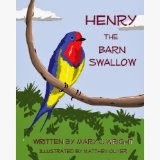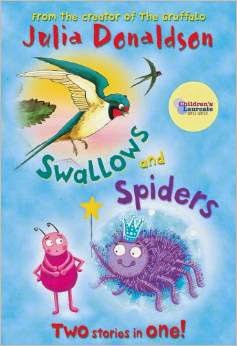 by Adele Barger Wilson, author of Bonding with the Barn Swallows
by Adele Barger Wilson, author of Bonding with the Barn Swallows
© 2014 Adele Wilson
Children who are able to grow up around Barn Swallows are fortunate indeed because these birds demonstrate quite a few virtues that can be applied to our lives as humans. Among these virtues are resourcefulness, diligence, family devotion, vigilance, and community. Others are hope and optimism. In my book, Bonding with the Barn Swallows, I give examples, all set by Barn Swallow behavior, of these and other virtues, which I call "lessons".
This blog post offers guidelines or how to avoid alarming Barn Swallows when you or your children are near them. In general, these guidelines can be followed for viewing many types of wild birds. At the end of these guidelines is a list of books about swallows for children.
Children (and even some adults) need to learn how to act around Barn Swallows so as to not upset or alarm them. This can be rather challenging because Barn Swallows will swoop at people who are near their nests, or even near their babies after they have left the nest. They will even swoop at people who are near a nesting site that they are planning to use.
If a Barn Swallow senses you as a threat, it will call its mate and friends, and you will have several swallows swooping toward you at once. This is called "mobbing". This can prove to be quite scary because human instinct dictates that, when we are being mobbed, we put our hands and arms around our face in order to protect our eyes and heads.
In order to teach children how to act around Barn Swallows, we first must learn how to do so ourselves. I offer the following guidelines and rules:
1. The first step in learning how to act around Barn Swallows is to KNOW THAT THEY WILL NOT HURT YOU. They will try to scare you by swooping near you. However, I have never had a Barn Swallow make contact with my head or any other part of my body. Perhaps that is because I have learned how to act calm and non-threatening while they are swooping toward me, but I have never read or heard of a Barn Swallow harming anyone.
2. With the knowledge that you will not be harmed by any Barn Swallows, you can start practicing acting calm and neutral around them. Under any circumstances, DO NOT FLAIL YOUR ARMS AROUND. This will most certainly alarm the swallows and cause them to swoop at you more intensely.
3. YOU SHOULD KEEP YOUR ARMS TO THE SIDES OF YOUR BODY. The swallows will interpret any use or motion of your arms as your intention to attack them. They will see your arms as wings and sense that you are a large bird preparing to prey on them.
4. You should ACT CALM AND RELAX YOUR BODY as much as you can. Swallows can sense the degree of tension in your body.
5. You should MOVE SLOWLY, just as if you are under water. The faster you move, the more threatening you will appear to the swallows. If and when you are able to approach the swallow at close range, you should stand as still and statue-like as possible. If you are using a camera, continue to go through the motions as usual, but do them as slowly and gracefully as you can.
6. If you are with anyone, try to talk as little and as quietly as possible, and DO NOT USE YOUR HANDS OR ARMS WHILE YOU TALK. Many people naturally do this, and for these people, talking without use of their hands can be challenging. But it can be learned with practice.
7. If you are alone (and this is the best way to approach any type of wild bird), TRY NOT TO TALK OR USE YOUR VOICE. Sometimes I have tried to communicate to the swallows using a sweet, soft voice, and often I automatically resort to this without thinking. But I have found it to have no positive effect, and sometimes it will even further scare the swallows.
8. If a swallow swoops toward you and brings in other swallows that do the same, it is time to calmly and quietly leave the area. This is not difficult because your instincts will dictate that you do so anyway.
9. Assuming that the swallows have not started mobbing you, the last step does not involve your body. Rather, it is a state of mind. Try to CENTER YOURSELF IN A MEDITATIVE OR PRAYERFUL STATE OF CONSCIOUSNESS and send Love to the Barn Swallow(s) who might feel threatened by you. This could even make a good first step if you can do it.
Here are six children's books about Barn and other types of Swallows:
Barn Swallows (In Winter, Where Do They Go?), by J. Clark
Sawyer.
Easy-to-read story about a Barn Swallow who takes off for
his migration south for the winter and joins many other Barn Swallows. Reveals how migrating Barn Swallows survive
the winter. The author has written other
children’s books about where animals go in the winter.
Henry the Barn Swallow, by Mary J. Wright. A charming story of how Henry the Barn Swallow hatches out of his eggshell, gains the courage to fly from the nest, and discovers the people and pets of the house. Henry then meets Marvel, a female Barn Swallow, and they feed and play together until it is time for migration.
Two fledglings, Apollo the Swallow and Chack the Blackbird, meet in the garden. Apollo tells Chack that he is practicing flying to Africa. Chack tells Apollo that the blossoms on a tree will be turning to orange berries. Neither bird believes the other, but, when fall arrives, everything changes and they become friends forever.
Swallows and Spiders: Two Stories in One! by Julia Donaldson. First story seems to be a sequel to Follow the Swallow, with Chack the Blackbird needing to get a message to his friend, Apollo the Swallow, who is far away in Africa. Second story is about a spider, Spinderella, who wants to learn about numbers. Everyone else thinks she is silly, but then her Hairy Godmother steps in.
Song of the Swallows, by Leo Politi. A child who resides at the Mission at San Juan Capistrano is told that the swallows return there each spring. The child plants a garden at the Mission, hoping that a family of swallows will decide to nest there.
Swallows, by Charles L. Ripper. For children who like to study nature, this easy-to-read book
describes the Barn Swallow, in addition to six other types of swallows. Each page includes an illustration, also by
the author, revealing typical postures of the birds themselves or how they
build their nests and forage. Included
are cross-section illustrations of the various types of nests that these birds
build.
















